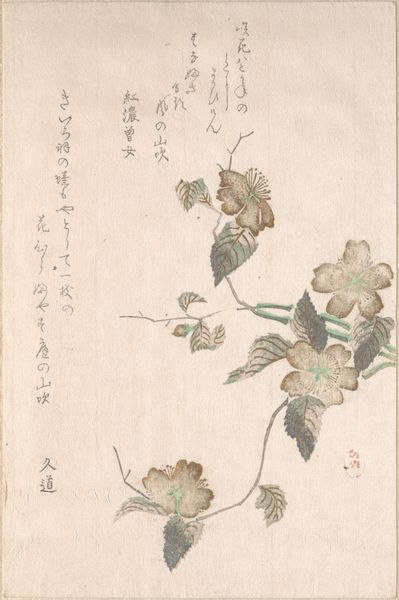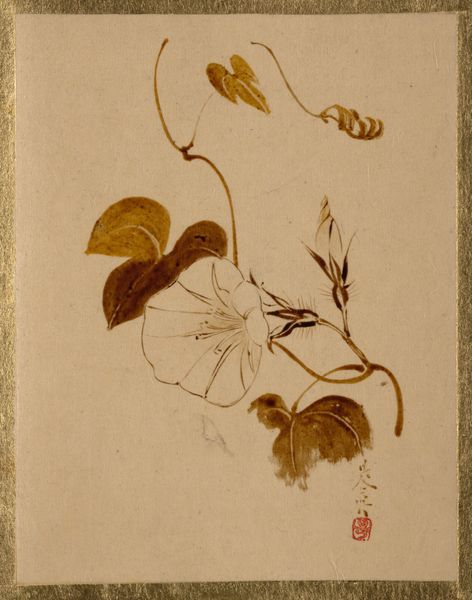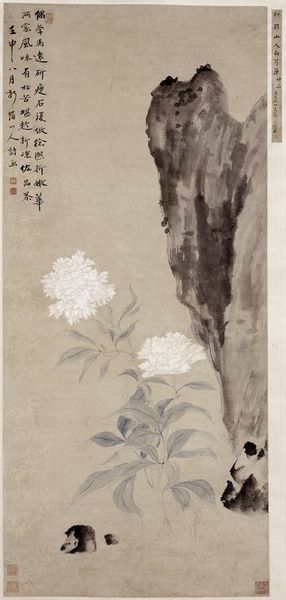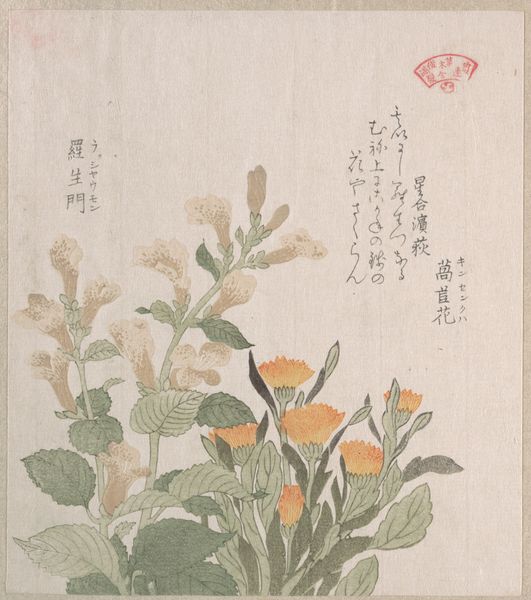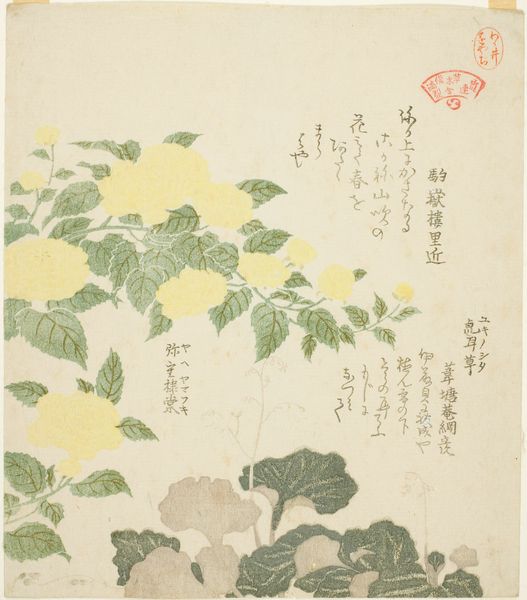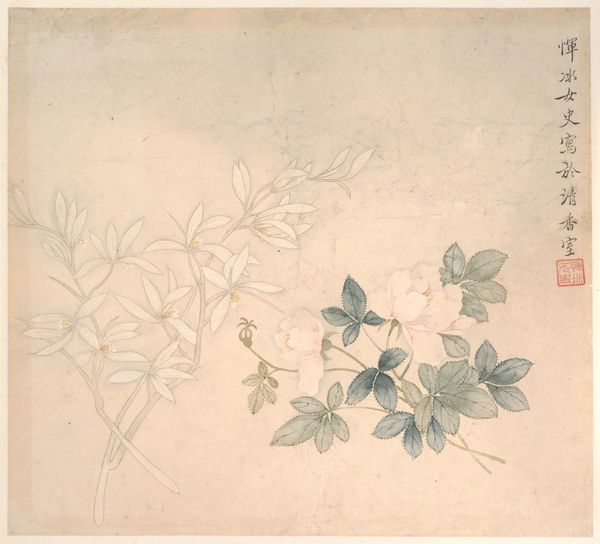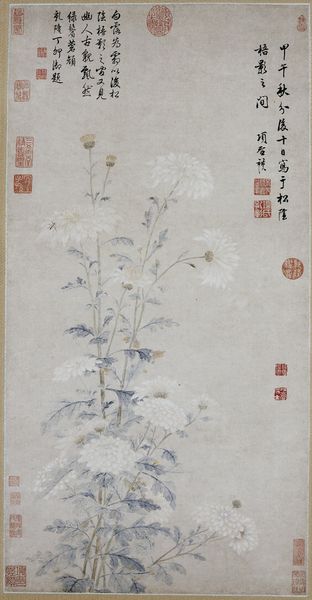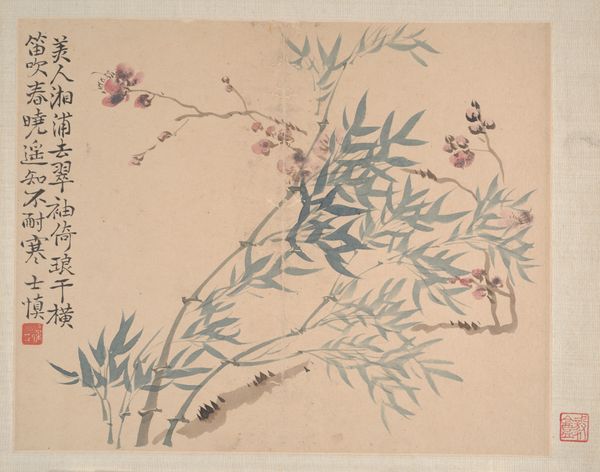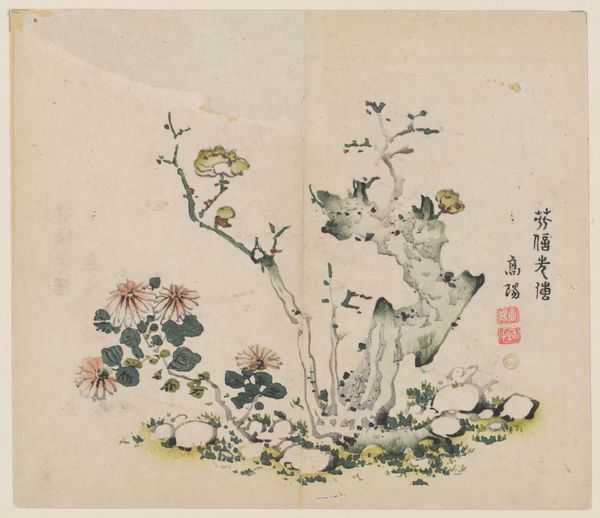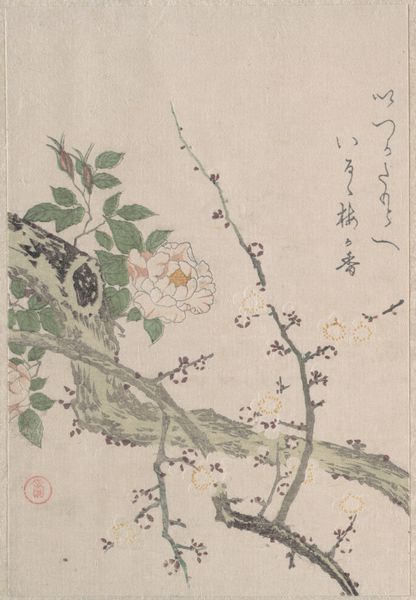
painting, watercolor, ink
#
water colours
#
painting
#
asian-art
#
watercolor
#
ink
#
watercolor
#
calligraphy
Dimensions: 22 1/2 x 11 3/8 in. (57.15 x 28.89 cm) (image)45 x 12 5/8 in. (114.3 x 32.07 cm) (overall, without roller)
Copyright: Public Domain
Editor: This is "Chestnuts" painted by Nakabayashi Chikuto in 1841. It's an ink and watercolor piece done in the Asian art style, and I’m immediately struck by how simple and delicate the composition is. The muted colors also give it a very calming feel. What stands out to you the most when you look at this work? Curator: The lasting power of familiar forms. Even depicted with such economy, the chestnut speaks across centuries. Consider the visual weight of those spiky seed pods, almost defensively huddled together. Chestnuts have historically symbolized hidden strength and potential in many cultures, suggesting the promise of sustenance and continuity, wouldn’t you agree? Editor: That's fascinating! I hadn’t thought about them symbolizing strength. I was just thinking of how the painting captured the beauty of the natural world. Curator: And there it is—the painting triggers the memory of our experiences in nature and its promise, connecting us with a sensory memory—its smells, feels, even tastes— passed through generations. Does the calligraphy strike you as important? Editor: Definitely. I’m still learning to interpret it, but it feels like it adds a whole other layer of meaning. Curator: Precisely. Calligraphy itself is a symbol, deeply ingrained in East Asian artistic tradition. It is an invitation for contemplation, bridging the visual and the textual. I wonder how this resonates with contemporary viewers disconnected from these historical art practices? Editor: It's really opened my eyes to the symbolism in what I thought was a simple nature painting! Curator: Indeed. And understanding that symbolic language lets us experience the artwork’s enduring, emotional significance.
Comments
minneapolisinstituteofart about 2 years ago
⋮
Nakabayashi Chikuto was a leading painter and theorist within a circle of mid-19th century Japanese scholars who were intensely interested in Chinese literati ideals. Chikuto specialized in Chinese-style landscape painting, but he also produced a number of works that were probably inspired by the careful approach of the Chinese master Yun Shou-ping (1633-1690). Although Yun himself did not leave China, his style became known in Japan through the works of other artists as well as by the importation of paintings in his technique. Like Yun, Chikuto_'s brushwork was refined, and his colors are subtle rather than brilliant. He also used Yun's "boneless" technique of applying ink or pigment directly to the silk without constricting outlines.
Join the conversation
Join millions of artists and users on Artera today and experience the ultimate creative platform.
